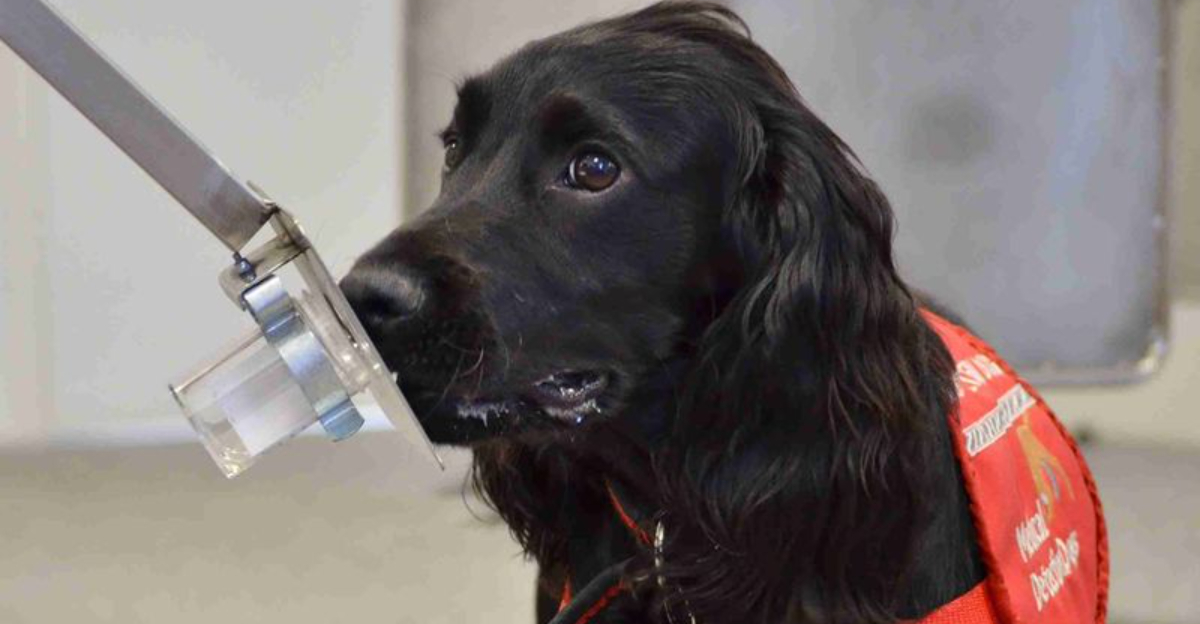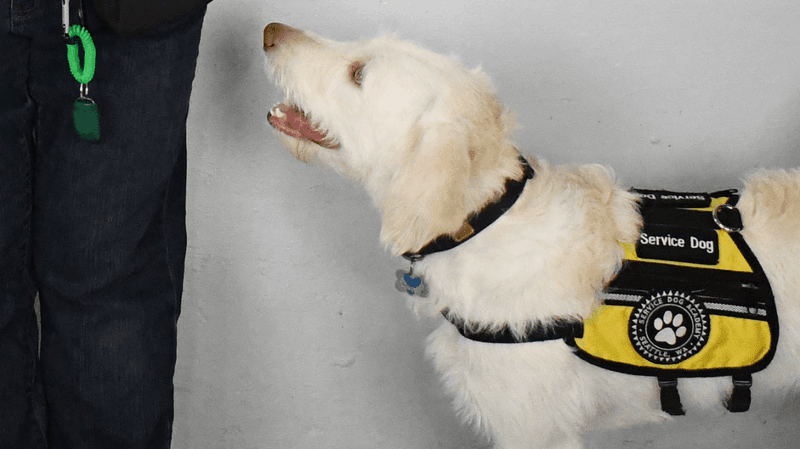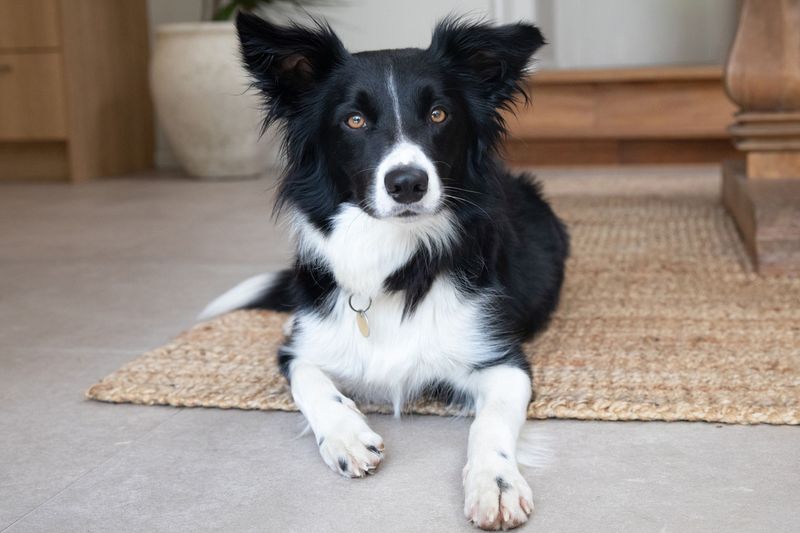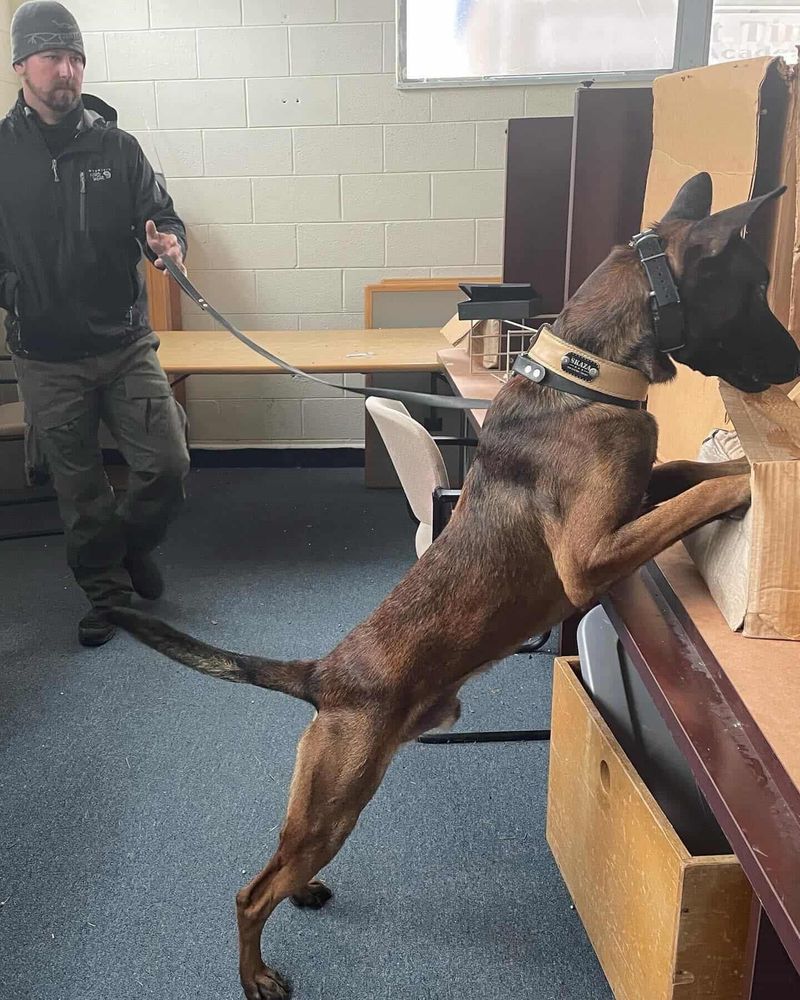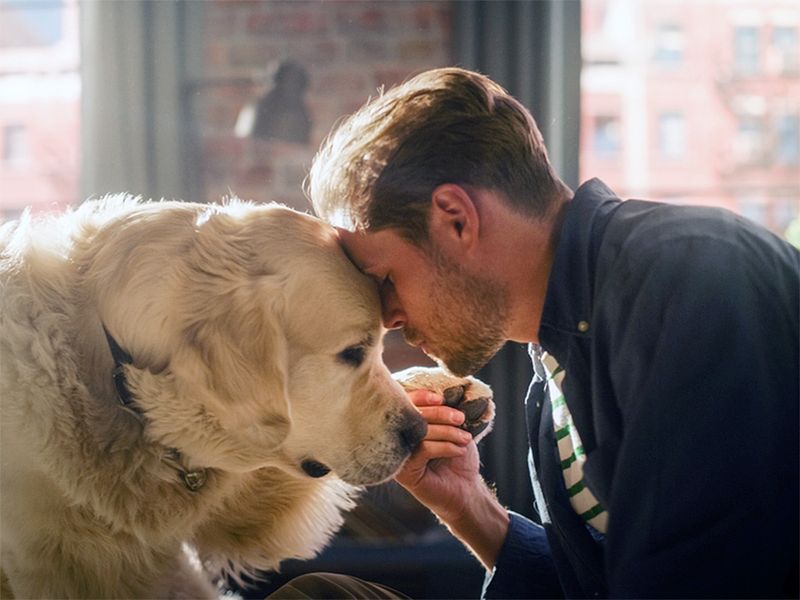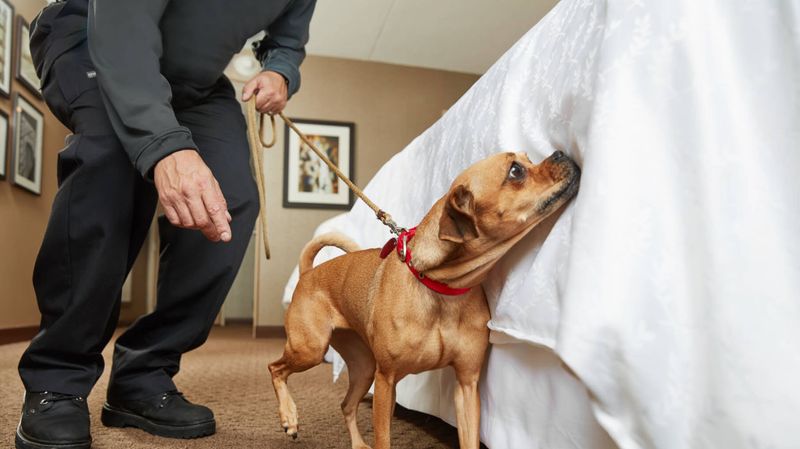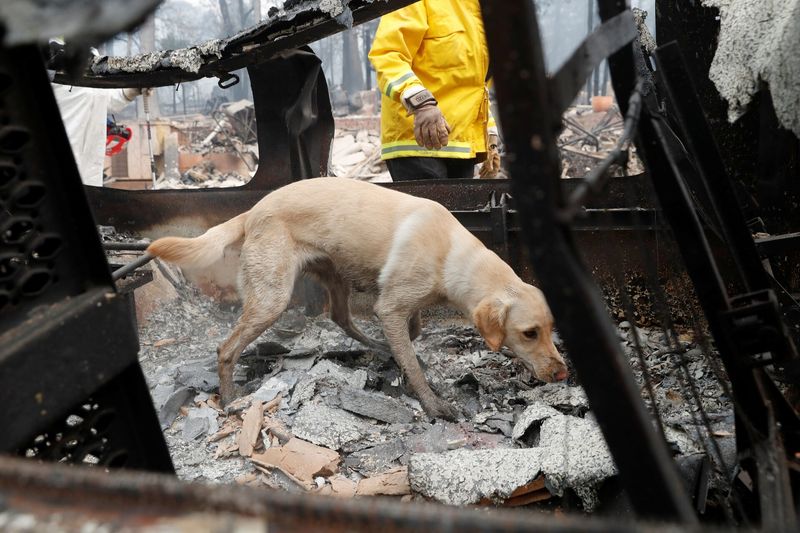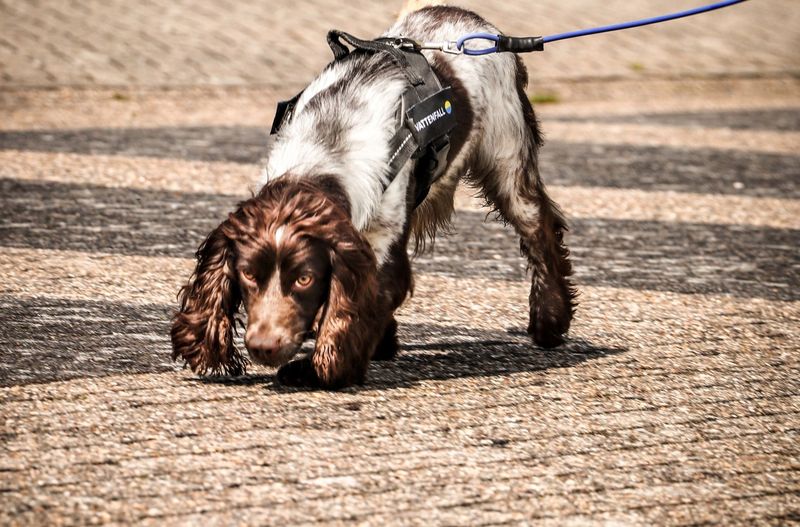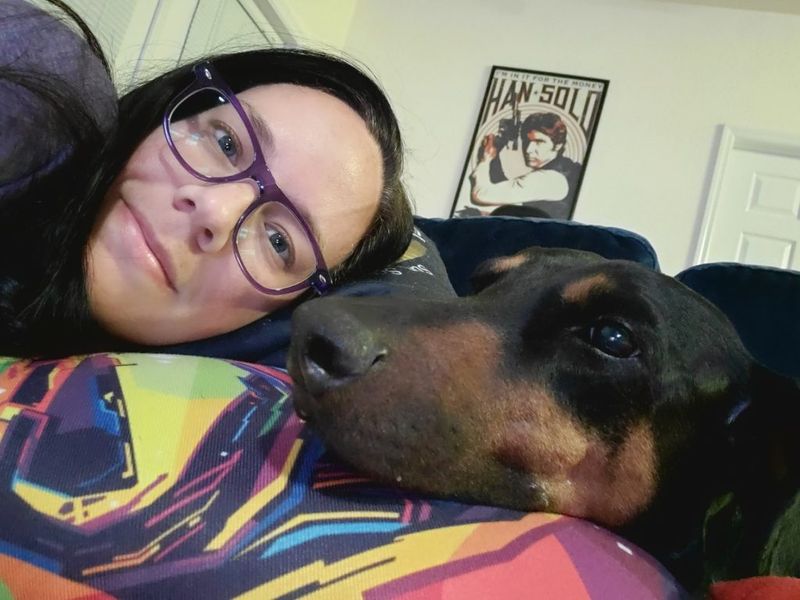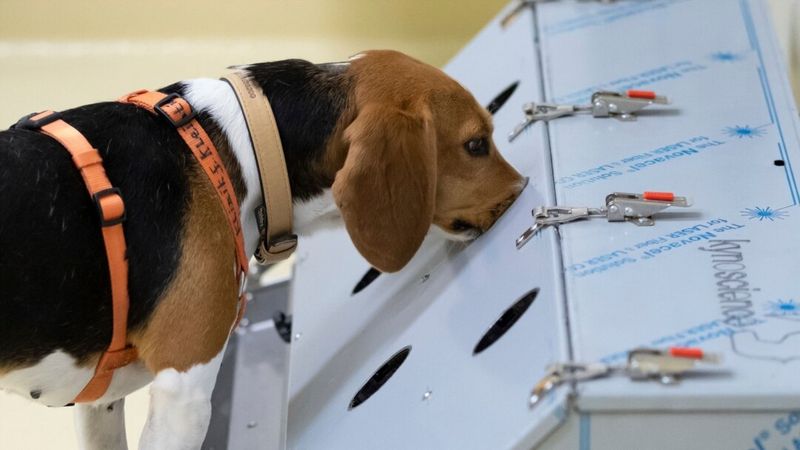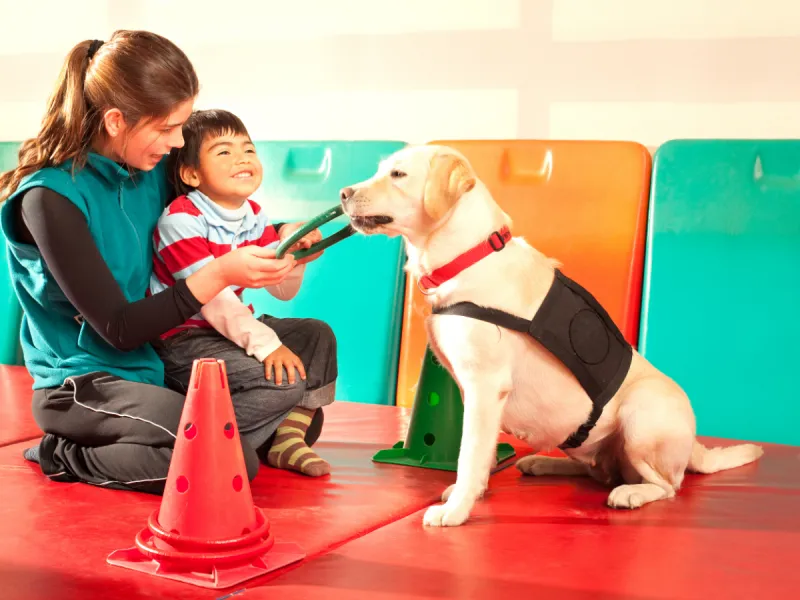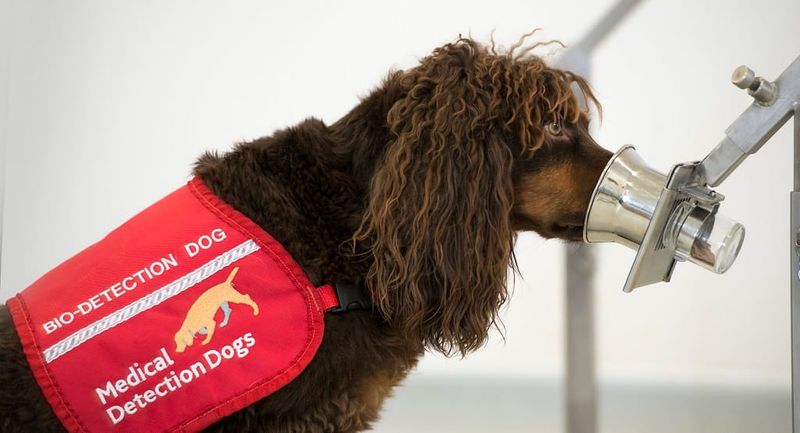Dogs have always been known for their extraordinary sense of smell. This powerful ability enables them to detect things that are completely imperceptible to humans. With noses equipped with up to 300 million olfactory receptors, dogs can unravel the most intricate of scents. Their noses are not just detectors but storytellers, revealing details about the world that are hidden from human perception.
Low Blood Sugar
A life-saving ability of dogs is their knack for detecting low blood sugar levels in people with diabetes. These medical alert dogs are trained to identify changes in their owner’s scent when their blood sugar drops. Golden Retrievers, known for their intelligence and loyalty, excel in this role.
Their acute sense of smell allows them to detect even the slightest shifts in glucose levels. By alerting their human companions with a nudge or paw, these dogs become invaluable partners, often averting potential emergencies and providing peace of mind to families.
Seizure Onset
Seizure alert dogs are a beacon of hope for individuals with epilepsy. Some dogs can sense an impending seizure well before it occurs, thanks to their advanced olfactory capabilities. Border Collies, with their keen intelligence and awareness, are often chosen for this important task.
These dogs are trained to recognize changes in their owner’s scent that precede a seizure. By providing an early warning, they offer their human companions time to find a safe space or alert someone nearby. The bond between these dogs and their owners is truly extraordinary.
Cancer Cells
In the world of medical marvels, dogs hold a unique place. Their noses can detect cancer cells with remarkable precision. Studies have shown that dogs can identify certain types of cancer, such as prostate cancer, by smelling a patient’s urine or breath. Canines like Labrador Retrievers have been trained to alert their human companions to the presence of cancer before it can be detected by conventional medical tests.
This incredible skill has opened new doors in early cancer detection. The dogs’ ability to sniff out cancer cells provides a non-invasive method of diagnosis, saving countless lives.
Explosives Detection
In the realm of security, dogs play an indispensable role. Their ability to detect explosives is unparalleled. Breeds like the Belgian Malinois are commonly used in airports and military settings for this purpose. These dogs undergo rigorous training to identify various explosive compounds by scent.
With their sharp noses, they can find hidden explosives that might be overlooked by machines or human inspectors. Their work is crucial in preventing dangerous situations and ensuring public safety. The dedication and skill of these dogs keep countless individuals safe every day.
Fear and Anxiety
The empathetic nature of dogs extends to detecting human emotions like fear and anxiety. German Shepherds, known for their loyalty and protective instincts, are especially attuned to their owners’ emotional states. They can sense changes in body odor and pheromones that occur when a person is scared or anxious.
By providing comfort through presence or physical touch, dogs help alleviate these feelings. Their ability to detect and respond to emotional cues enhances the human-animal bond, offering support and companionship to those in need.
Bed Bugs
In the fight against bed bugs, dogs are invaluable allies. Their acute sense of smell allows them to detect these pesky critters with precision. Breeds like Beagles are often employed in pest control due to their exceptional olfactory abilities.
These dogs can pinpoint infestations that might be missed by the human eye, making them essential in hotels and homes alike. By identifying bed bugs early, they help prevent infestations from spreading. The role of dogs in maintaining hygiene and comfort is a testament to their diverse capabilities.
Historical Artifacts
Dogs have been employed in archaeology to uncover historical artifacts. Breeds like Springer Spaniels are trained to detect the scent of ancient materials buried underground. Their ability to distinguish between different types of smells makes them perfect for this unique task.
At archaeological sites, these dogs assist in locating priceless artifacts that might otherwise remain hidden. Their contributions aid in the preservation of history, providing insights into past civilizations. The use of dogs in archaeology underscores their incredible range of skills and adaptability.
Invasive Species
Dogs contribute to environmental conservation by detecting invasive species. Cocker Spaniels are particularly adept at identifying non-native plants and animals that threaten ecosystems. Their olfactory prowess enables them to locate these species in forests and wetlands.
By identifying invasive species early, dogs help prevent them from causing irreversible damage to local flora and fauna. This crucial work supports conservation efforts and biodiversity. The role of dogs in protecting the environment highlights their importance beyond companionship.
Human Remains
In search and rescue missions, dogs are indispensable. Bloodhounds, with their exceptional scent-tracking abilities, are often used to locate human remains. Their powerful noses can detect decomposition odors over considerable distances.
These dogs provide closure to families by finding lost loved ones, even in challenging terrains. Their work in law enforcement and disaster recovery operations is invaluable. The dedication of these dogs demonstrates the profound impact they have in aiding human efforts to solve mysteries and recover precious lives.
Underground Fossil Fuels
Dogs have ventured into the oil and gas industry, where their noses help locate underground fossil fuels. German Shorthaired Pointers are trained to detect the scent of hydrocarbons, guiding exploration teams to potential drilling sites.
Their contributions make the exploration process more efficient and environmentally friendly by reducing the need for excessive drilling. These dogs’ ability to detect underground resources showcases the innovative ways humans utilize their natural talents.
Migraines
Some dogs have the remarkable ability to detect the onset of migraines in their owners. Poodles, with their intelligence and sensitivity, are well-suited for this task. They can perceive subtle changes in body chemistry that occur before a migraine strikes.
By alerting their owners to an impending migraine, these dogs provide an opportunity to take preventative measures. This ability enhances the quality of life for migraine sufferers, offering them relief and companionship.
Ovulation
Dogs can detect hormonal changes in humans, including the onset of ovulation. Dalmatians, known for their keen sense of smell, can perceive shifts in scent that indicate hormonal fluctuations.
This unique ability has applications in fertility treatments, where dogs assist by alerting to optimal ovulation periods. Their role in reproductive health emphasizes the diverse applications of canine olfactory talents.
Parts Per Trillion Detection
A dog’s nose is so sensitive that it can detect substances at concentrations of parts per trillion. Labrador Retrievers are often used in scientific research due to their ability to identify trace amounts of chemicals in controlled environments.
Their olfactory acuity is unmatched, making them valuable partners in research and safety assessments. The precision of these dogs offers insights into environmental monitoring and chemical analysis.
Emotion Changes in People with Autism
Dogs provide emotional support to individuals with autism by detecting changes in emotions. French Bulldogs, with their gentle demeanor, can sense shifts in mood or stress levels.
These dogs are trained to offer comfort through their presence and actions, helping to calm and reassure their human companions. Their role in improving emotional well-being highlights the significant emotional intelligence of dogs.
Illegal Drugs
In the fight against illegal drugs, dogs are pivotal. German Shepherds are commonly employed by law enforcement agencies to detect narcotics. Their exceptional sense of smell allows them to identify concealed substances with precision.
These dogs undergo extensive training to differentiate between various drug odors. Their contributions aid in crime prevention and public safety, showcasing the important role of dogs in society.
Bacteria and Pathogens
Dogs are entering the field of microbiology, where their noses help detect bacteria and pathogens. Jack Russell Terriers are trained to identify specific bacterial scents in laboratory settings.
Their contributions to scientific research and public health are invaluable, offering a non-invasive method for pathogen detection. These dogs’ ability to sense microscopic life forms reveals yet another layer of their incredible olfactory skills.
Digital Devices
In the digital age, dogs have been trained to detect electronic devices. Border Terriers, with their acute scent detection, are used by law enforcement to find hidden gadgets like hard drives and memory cards.
This unique ability aids in criminal investigations, where digital evidence can be crucial. The adaptability of dogs in various fields, including technology, highlights their remarkable versatility and value.
Blood Pressure Changes
Dogs can detect changes in blood pressure, offering support to individuals with hypertension. Basset Hounds, with their excellent noses and calm nature, are well-suited for this role.
By sensing fluctuations in scent associated with blood pressure changes, these dogs alert their owners to potential health issues. Their assistance provides reassurance and promotes well-being, demonstrating the profound impact dogs can have on human health.
